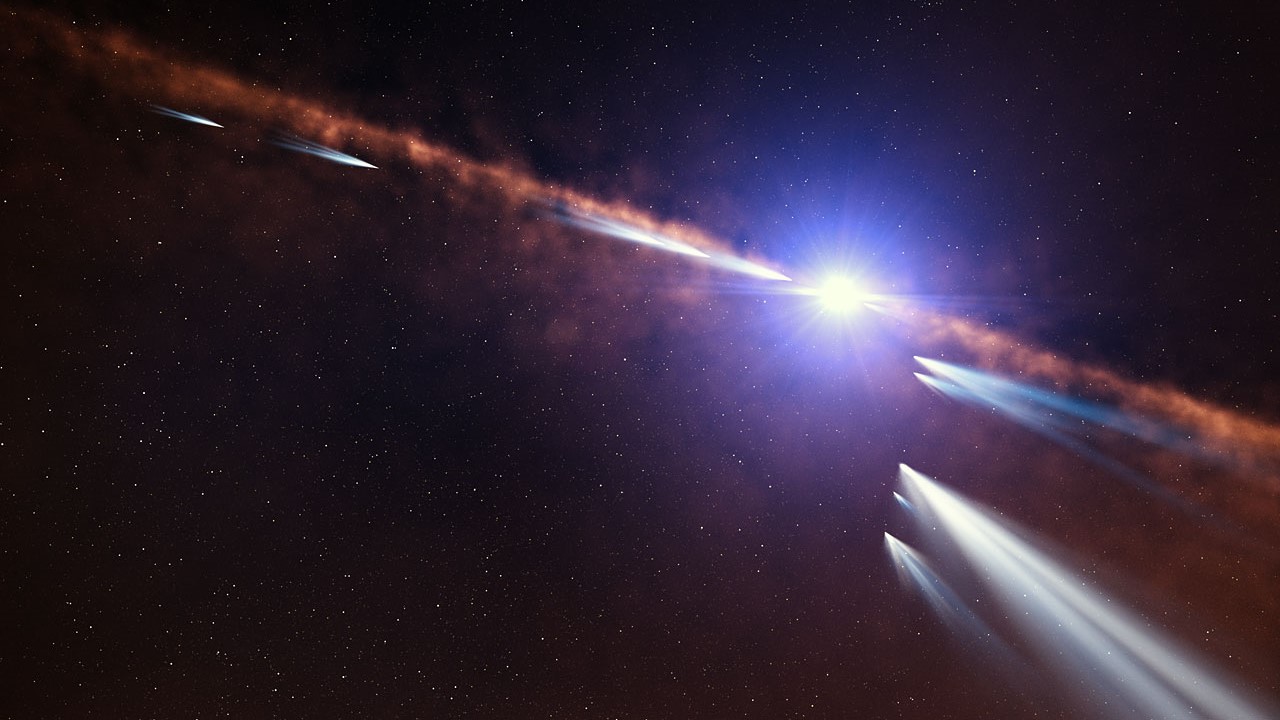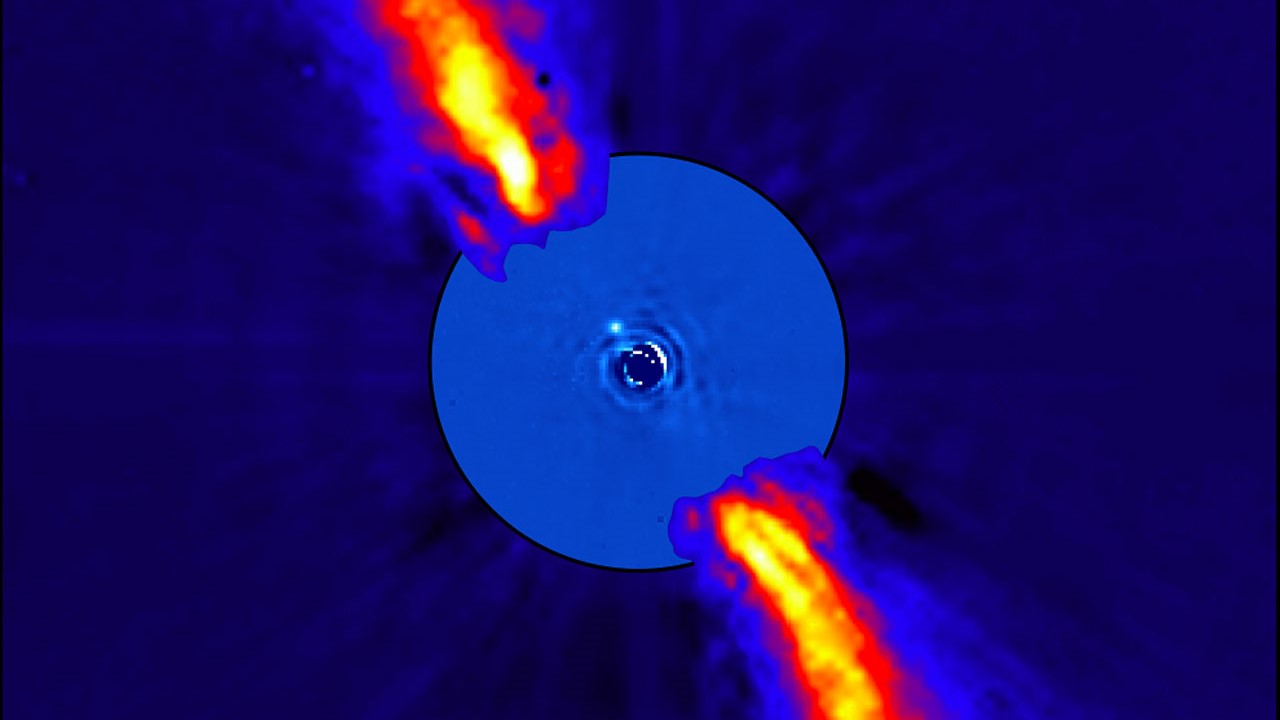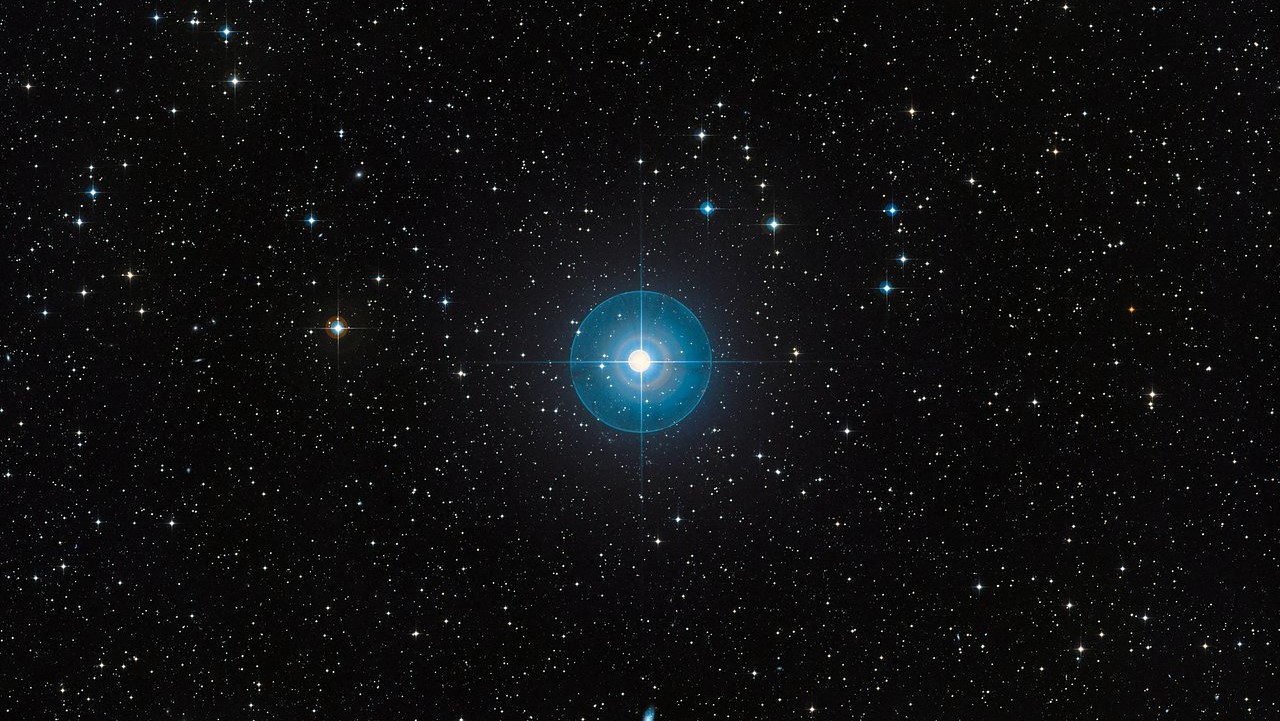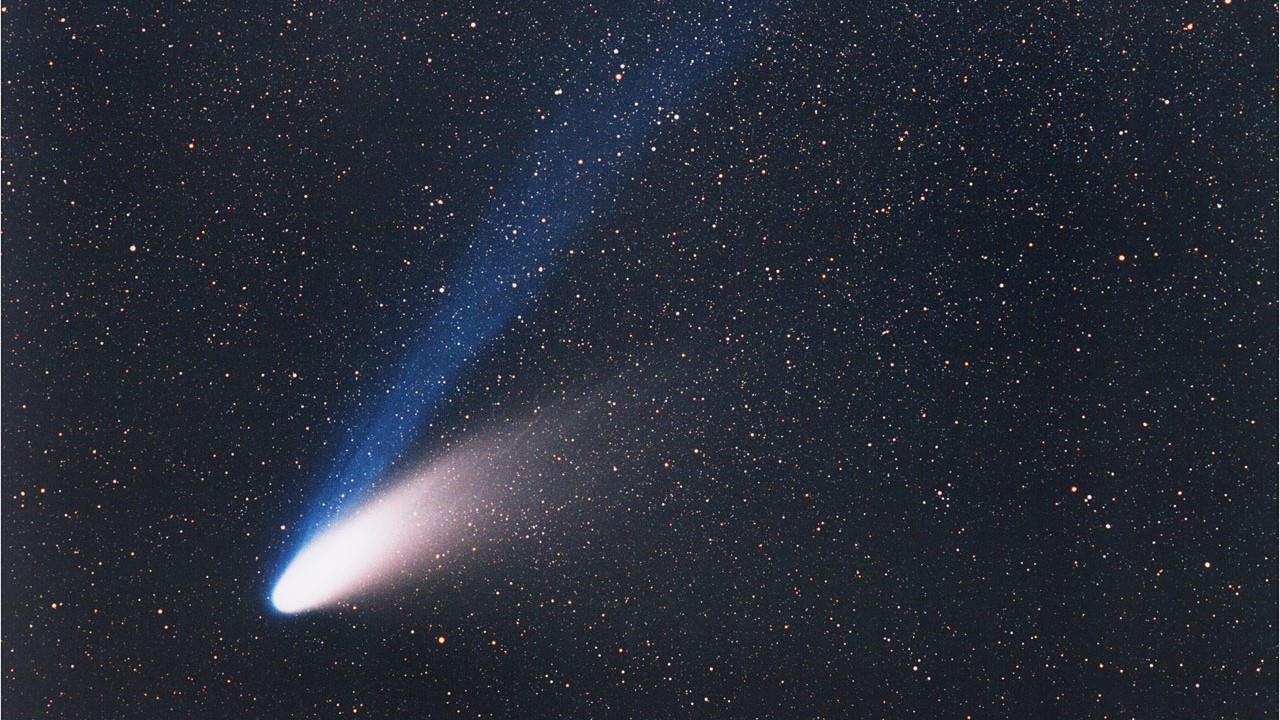Largest treasure trove of exocomets to date found in alien solar system
NASA's planet-finding TESS mission has spotted 30 comets around a young star, giving astronomers fresh insight into the processes that form comets and planets.

Thirty alien comets have been spotted transiting the young star Beta Pictoris, their long tails lighting up the skies of the fledgling planets forming there.
The comet discovery has been made using NASA's Transiting Exoplanet Survey Satellite (TESS), which watches for dips in starlight as planetary bodies pass in front of — or transit — their star. Beta Pictoris, which is 63.4 light years away, is home to a dusty planet-forming disk that was discovered back in 1983 by IRAS, the Infrared Astronomy Satellite. The disk contains at least two planets, both gas giants, and spectral observations gathered as long ago as 1987 suggested evidence for comets (or 'falling evaporating bodies' as they were referred to at the time) releasing dust and gas into the disk.
In 2019, astronomers led by Sebastian Zieba, of the University of Innsbruck in Austria, used TESS to discover three 'exocomets' transiting Beta Pictoris. Now, another team, led by astronomer Alain Lecavelier des Etangs, of the Institut d'Astrophysique de Paris in France, has observed 30 exocomets in the Beta Pictoris system, including the three previously discovered.
"These additional exocomet detections are very useful because we now see many different comets of different sizes, which means we can begin to compare their size distribution — how many small ones we see compared to the bigger ones," Matthew Kenworthy, an astronomer at Leiden Observatory in The Netherlands and a member of both research teams, told Space.com.
Related: Amazing photos of Comet Leonard in the night sky
Although Beta Pictoris is not the first star around which exocomets have been discovered, it is the first star for which it has been possible to measure the size distribution of the comets.
Based on the size of their tails and the amount of dust they produce (using Comet Hale-Bopp as a model), Lecavelier des Etangs' team was able to measure the diameter of the nucleus or core of each comet, finding them to range between 2 and 8.7 miles (3 to 14 kilometers) across, with more smaller comets than larger comets. In fact, the size distribution of the exocomets closely matches the size distribution of comets in our solar system.
Breaking space news, the latest updates on rocket launches, skywatching events and more!
This pattern suggests that the processes that formed the exocomets around Beta Pictoris are the same as those that formed our solar system's comets; in turn the way that cometary formation plays into planet formation is also likely the same. Astronomers can learn more about how the planets of the solar system, including Earth, formed by studying exoplanetary systems.
The prevailing model of planet formation, at least for rocky planets, is that they are the result of collisions and mergers between smaller bodies — comets, asteroids and planetesimals. If the gravity of the bodies involved in a collision is strong enough, it can mold the resulting debris into a larger body. If the objects colliding are too small, then there won't be enough gravity to merge them, and instead they will fragment and disperse, resulting in more smaller bodies than larger ones. That's exactly what astronomers see in the size distribution of Beta Pictoris' exocomets.
"The size distribution is remarkably similar to that predicted for a population of debris resulting from collision and fragmentation cascades," Lecavelier des Etangs told Space.com.
For the scientists, it's reassuring to gain more evidence that planets form in the same way around different stars, so that we can draw direct comparisons with our solar system.
"The formation of planets and comets are tied together," Kenworthy said. "So our first measurement of a comet distribution outside of our solar system advances our understanding of these processes."
Comets are also believed to be important for life, potentially delivering water and biological building blocks to the surfaces of planets. Beta Pictoris is only about 25 million years old, and this process of comet impacts bringing life's ingredients to so-far unseen terrestrial planets may have already begun.
For Lecavelier des Etangs, the observations provide a sense of personal justification. Back in 1999, a few months before even the first planet had been discovered by the transit method, he predicted that one day, exocomets would be discovered transiting Beta Pictoris.
"It gives me deep satisfaction to see that the prediction that I made over 20 years ago has been shown to be true," he said. "But the most important thing is that not only was it right, but that it was useful!"
A paper describing the new discovery was published Thursday (April 28) in the journal Scientific Reports.
Follow Keith Cooper on Twitter @21stCenturySETI. Follow us on Twitter @Spacedotcom and on Facebook.

Keith Cooper is a freelance science journalist and editor in the United Kingdom, and has a degree in physics and astrophysics from the University of Manchester. He's the author of "The Contact Paradox: Challenging Our Assumptions in the Search for Extraterrestrial Intelligence" (Bloomsbury Sigma, 2020) and has written articles on astronomy, space, physics and astrobiology for a multitude of magazines and websites.



